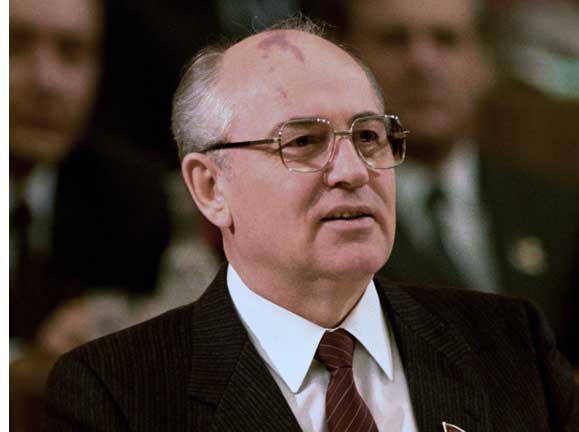1985 Gorbachev Soviet Leader

Gorbachev
On March 11, 1985, after the death of Secretary General Cherenenko, Mikhail Sergeyevich Gorbachev was named the new leader of the Soviet Union. Gorbachev represented a younger generations of Soviet leaders, and began a series of reforms aimed at invigorating the Communist system in the Soviet Union, while at the same time improving relations with the West. The changes he began soon developed a momentum of their own..
The death of Konstantin Chernenko and the subsequent appointment of Mikhail Sergeyevich Gorbachev as the General Secretary of the Communist Party of the Soviet Union marked a turning point in Soviet history. Chernenko, who had assumed the role of General Secretary on February 13, 1984, after the death of Yuri Andropov, died on March 10, 1985. His tenure was short and plagued by health issues, leaving the Soviet Union with a power vacuum and a need for transformative leadership.
Konstantin Chernenko was born in 1911 in the Russian Empire and rose through the ranks of the Soviet political system. He was a protégé of Leonid Brezhnev, the Soviet leader from 1964 to 1982, and his ascent to power was a reflection of the conservative faction's influence within the Communist Party. Chernenko's time in office was marked by a continuation of the Brezhnev-era policies, including increased military spending and continued suppression of political dissent. However, his ill health hindered his ability to govern effectively, and his frequent absences from public life raised questions about his capacity to lead the country.
Mikhail Sergeyevich Gorbachev was born on March 2, 1931, in the Stavropol region of the Soviet Union. A lawyer by training, he joined the Communist Party in 1952 and quickly rose through the ranks, serving in various regional and national capacities. Gorbachev was seen as a potential candidate for the top post in the Soviet Union, given his youth, energy, and reformist ideas. He had been a member of the Central Committee of the Communist Party since 1971 and a member of the Politburo since 1979.
When Chernenko died, the Soviet Union was facing numerous challenges, including a stagnating economy, widespread corruption, a rapidly escalating arms race with the United States, and growing unrest in Eastern Europe. The Politburo recognized the need for a new and dynamic leader who could address these issues and steer the country towards a new direction.
On March 11, 1985, the day after Chernenko's death, the Central Committee of the Communist Party elected Gorbachev as the new General Secretary, making him the youngest leader in Soviet history at the age of 54. Gorbachev's appointment was a significant departure from the previous pattern of selecting older, more conservative leaders. It signaled a willingness within the Soviet leadership to embrace change and pursue new policies to address the country's mounting problems.
Gorbachev's tenure as General Secretary was marked by his ambitious reform agenda, aimed at modernizing the Soviet Union and making it more competitive on the global stage. He introduced two key policies: "glasnost" (openness) and "perestroika" (restructuring). Glasnost aimed to increase transparency and freedom of information within the Soviet Union, while perestroika sought to reform the country's political and economic systems.
Under glasnost, the Soviet government allowed greater freedom of speech and loosened restrictions on the media, leading to a more open discussion of the country's problems and fostering a spirit of criticism and debate. Perestroika, on the other hand, involved a range of economic reforms, including the decentralization of economic decision-making and the encouragement of private enterprise. These policies aimed to increase economic efficiency and productivity, as well as reduce corruption and bureaucracy.
 >
>